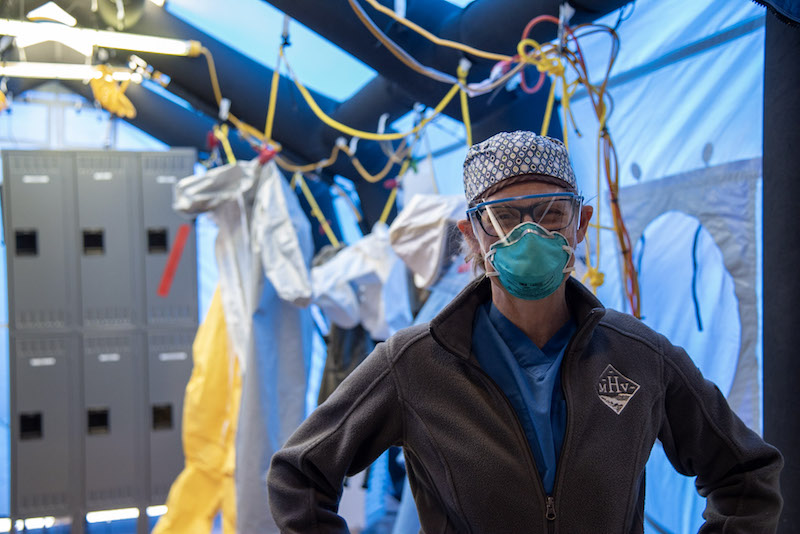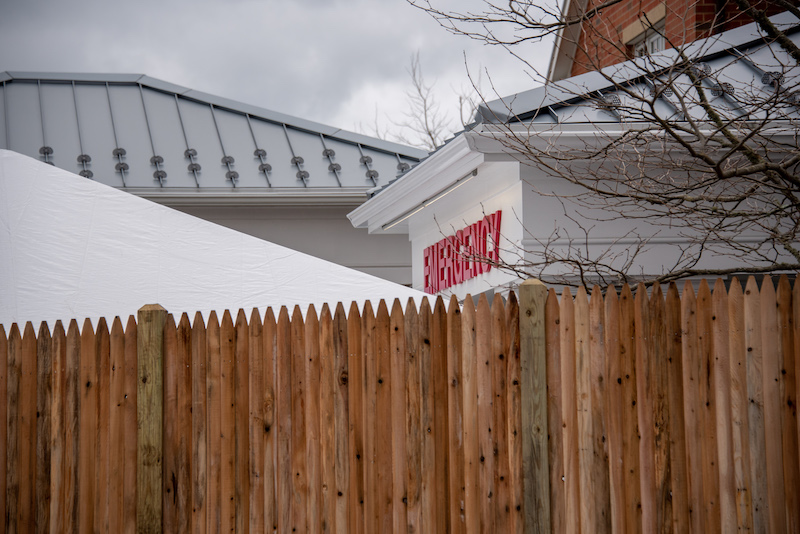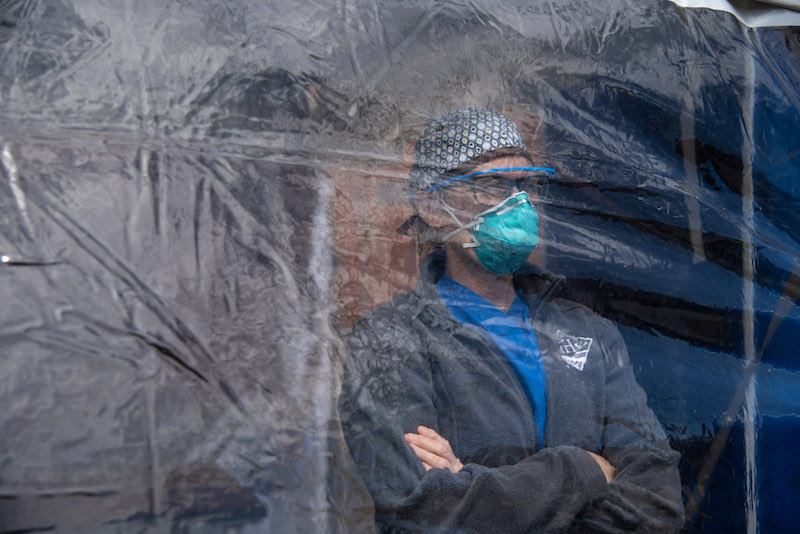Emergency room and other non-Covid related visits to Martha’s Vineyard Hospital have plummeted over the past month and a half, mirroring a nationwide trend as hospitals — and those who visit them — have been forced to undergo dramatic transformations in the midst of a global pandemic.
“It was remarkable,” said Dr. Karen Casper, who serves as head of ER at Martha’s Vineyard Hospital, in an interview with the Gazette. “We definitely have seen a decrease in the volume of patients coming to our emergency department . . . and clearly the Covid pandemic has impacted this.”
Numbers tell the story.
Last April, the hospital had 916 emergency room visits, according to statistics provided by hospital spokesman Katrina Delgadillo. This April, the hospital had 385 — a nearly 60 per cent decrease for the month.
With a statewide stay-at-home order in effect, the drop in emergency room patients has occurred across the board, from strokes to heart attacks to appendicitis, although Dr. Casper said she did not want to speculate on medical reasons until exact data had been tabulated. Regardless, she said, the decline is worrisome.
“I don’t know, the novelty of this pandemic — no one has ever had this in our lifetime,” Dr. Casper said. “Just because you didn’t have an M.I. [myocardial infarction], it doesn’t mean that your chest pain wasn’t really important and needed to be checked on.”
Other departments within the hospital have seen similarly dramatic dropoffs. Primary care visits in April of 2019 totaled 2,364 visits. In 2020, those dropped to 1,709, an approximately 30 per cent decrease. The physical therapy department, which closed when the pandemic began, has had visits go down from 4,702 in April 2019 to 599 this past month, an approximately 90 per cent decrease.
Hospitals around the country — including on the Vineyard — want their patients to know that they are open for regular business. But convincing those patients to come in, as a highly-contagious respiratory infection spreads unknowingly across the globe, including within hospitals, makes an emergency room a difficult sell.
“We want people to come in if they are sick and don’t want them to wait until they are in worse trouble,” said Dr. Steven Feder, a pediatrician who also heads primary care at the Vineyard hospital. “People are definitely, very understandably wary of coming to the hospital, and we are equally concerned about people coming here . . . that sense is out there, of a hesitancy to come in,” he said.
The decline in non-Covid related visits has had reverberations throughout the rural health facility, as federal safety guidelines have forced staff to be reassigned and primary care doctors have had to work with patients virtually.
Although no staff have been laid off, according to Ms. Delgadillo, Partners Healthcare — the hospital’s parent network and owner — has established protocols so only essential personnel can directly enter patients’ rooms. That means staff in non-essential roles, including those involved in supportive care, can no longer work directly with patients and have had to use virtual substitutes.
A donor has provided the hospital with iPads so non-essential support staff can communicate with patients in their rooms. It’s helped tremendously, Dr. Casper said, but it’s still not the same as hands-on care. Some ER staff that were once allowed to work directly with patients are now helping with things like PPE distribution, triage or at the call center and screening hotline.
“That’s been hard, and it’s been a really big change,” Dr. Casper said. “But we are lucky that we have people who are willing to use their skillset in different areas.”
Revenues have also dropped with the decline in visits.
“I think it is fair to say that if volume has dropped, our revenue stream has been impacted in a direct relationship there,” Ms. Delgadillo said.
And summer staffing remains an open-ended question, Dr. Casper and Ms. Delgadillo said. The hospital normally relies on an influx of summer staff to match the enormous seasonal fluctuations in ER demand. But this year, decisions have not yet been made about summer staffing as patient numbers remain in limbo. Dr. Casper said the unknowns presented by the virus could affect their thinking on standby and per-diem staff.
“We are having a lot of conversations with our summer staff that come,” Dr. Casper said. “We haven’t finished working on this, but there has been a lot of communication.”
With those concerns in mind, the Martha’s Vineyard Hospital has spent the past two months completely transforming its facility into a Covid-safe operation. Staff have segregated the hospital into Covid and non-Covid sections, constructed external triage tents, eliminated all elective surgeries and conducted non-essential patient care virtually. Almost all staff are working overtime.
“We don’t want to give the impression that we haven’t been busy,” Dr. Feder said.
As of this week, the hospital had tested more than 500 people with respiratory symptoms for the virus. They treat each and every one as if they are positive, meaning that nurses, physicians and other essential hospital staff have had to take extreme precautions to not just protect themselves, but also protect the non-Covid related patients at the hospital. The hospital has had four Covid-positive patients hospitalized since the outbreak began. One hospital staffer has tested positive for the virus.
The emergency department has remained open 24/7 during the pandemic, presenting a unique challenge for staff as they have had to adapt on their feet to keep patients, and themselves, safe.
“We really have to respect this virus,” Dr. Casper said. “And part of respecting this virus is making sure that we keep the viral load in our emergency department down. And to do this, we’ve had to make great infrastructure changes.”
Viral load represents the amount of virus particles in a given space or medium. In order to decrease it, the first thing the hospital did internally was transform previously unavailable spaces into “negative pressure” rooms, which decrease viral load by preventing air from circulating through the rest of the hospital. When the pandemic began, the hospital only had one negative pressure room. Now the emergency department alone has five.
They’ve also built an emergency department annex for non-Covid related visits, continued “terminally cleaning” parts of the facility — an intense disinfecting procedure that involves removing and sanitizing every detachable item from a room — and become even stricter about the use of masks and personal protection equipment, for both patients and hospital employees.
“It’s been amazing to watch,” Dr. Casper said. “This is a different workflow. And I think the more we’ve done it, and the more we’ve drilled, and the more we’ve trained, the better we’re getting at it.”
With those measures in place, hospital staff hope that they can allay patients fears of coming through their doors — or tents. Dr. Casper said the ER has seen an increase in visits recently, and she hopes the trend continues.
“We just want our patients back,” she said.










Comments (12)
Comments
Comment policy »